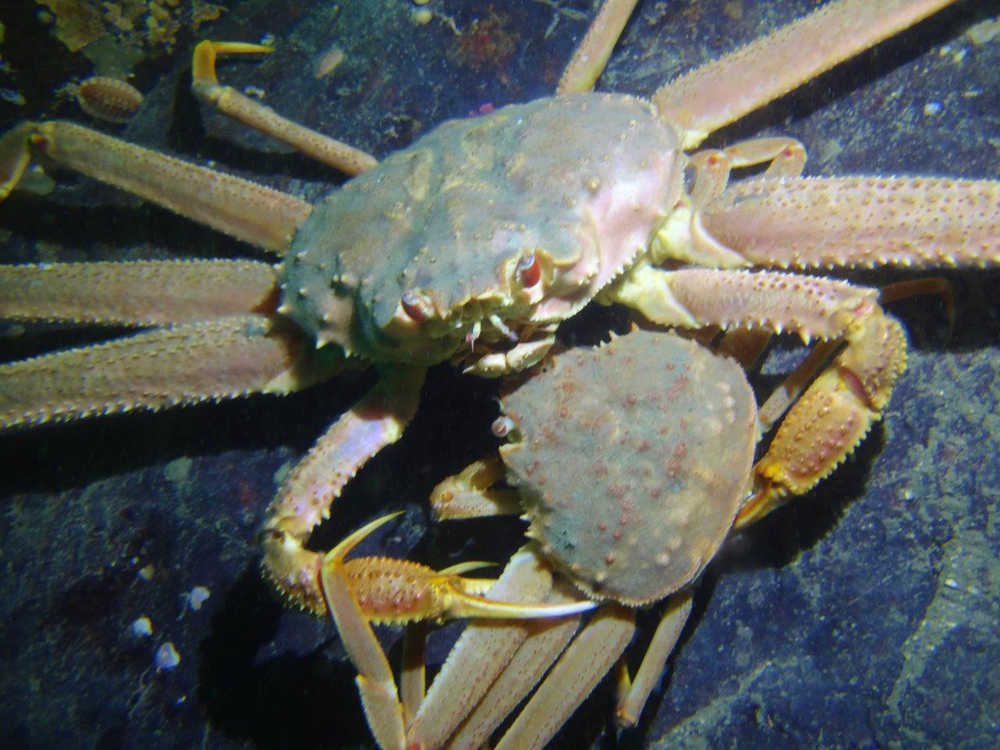Female tanner crabs, particularly those that have mated in previous years, commonly gather in huge groups, at a density of over 100 females per square meter, in the mating season. Males come and mate with females at the periphery of the group. A male grabs a female by her front end and holds her possessively for several days. If a young female has not mated before, and has not yet molted her hard shell, the holding period may be considerably longer, but of course, this reduces the number of mating opportunities of such males. Females of tanner crabs (but not king crabs, which have to wait until the female molts) can mate even when their shells are hard, so there would be an advantage to males in mating with older females, with a shorter holding time. Furthermore, large females produce more eggs than small ones—up to several hundred thousand eggs in each clutch. Large males, with large claws, have a competitive advantage over smaller males, and females may be able to reject the advances of small males. Males can mate several times each season, but their sperm supply becomes depleted. At least in some cases, females can store sperm from more than one mating, and the male that fathers most of the eggs may be the one that transferred the most sperm or the last one to mate. Females incubate eggs on their abdomens for almost a year, until it is time to mate again.
• Mary F. Willson is a retired professor of ecology.

